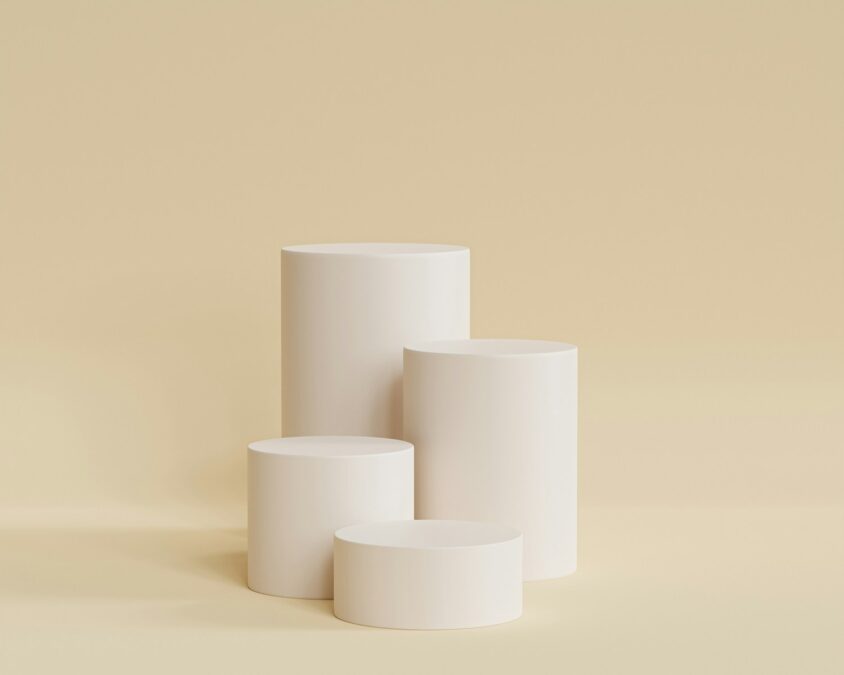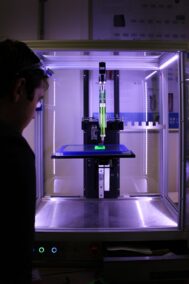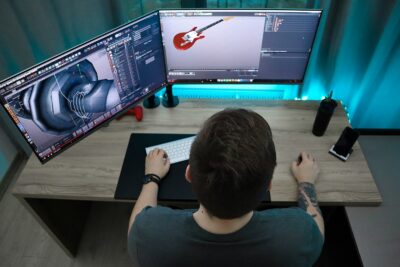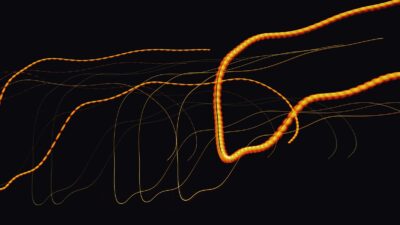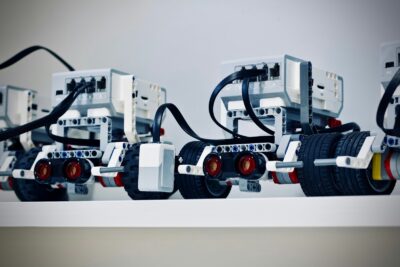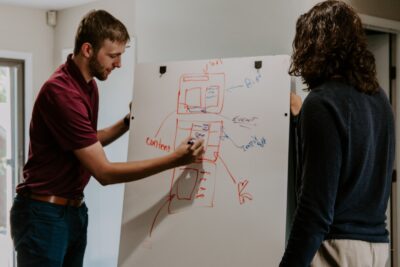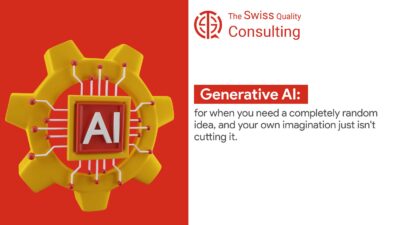How 3D Printing is Revolutionizing Bespoke Fashion Items
The Evolution of Fashion: Integrating 3D Printing
In the rapidly evolving world of fashion, the ability to create bespoke fashion items is facilitated by 3D Printing in Fashion. This innovative technology is transforming how fashion designers and brands approach customization and production. By allowing designers to produce unique, tailor-made garments with unparalleled precision, 3D printing is setting new standards in the industry. In regions like Saudi Arabia and the UAE, where luxury and exclusivity are highly valued, 3D printing is finding a significant foothold. It empowers designers to cater to individual preferences and specific body measurements, ensuring a perfect fit and a high level of personalization.
Moreover, the Middle Eastern fashion market, particularly in cities like Riyadh and Dubai, is known for its affinity towards cutting-edge trends and technological advancements. The introduction of 3D printing into this market aligns perfectly with the region’s desire for innovation and exclusivity. Fashion designers can now experiment with complex patterns and structures that were previously impossible to achieve with traditional methods. This technological shift not only enhances the aesthetic appeal of fashion items but also contributes to sustainability by reducing waste during the production process.
As the fashion industry continues to embrace 3D printing, the potential for innovation grows exponentially. Designers are no longer constrained by the limitations of conventional manufacturing techniques. Instead, they can push the boundaries of creativity and functionality, resulting in a new era of fashion where bespoke items are the norm rather than the exception. This shift is particularly significant for high-end fashion brands looking to differentiate themselves in a competitive market.
Advantages of 3D Printing for Fashion Designers
The integration of 3D printing into fashion offers numerous advantages for designers. One of the most notable benefits is the ability to create intricate and complex designs that were once unachievable. With 3D printing, designers can produce detailed patterns, textures, and structures that add a unique touch to their collections. This capability is especially valuable for creating bespoke fashion items that stand out in a crowded marketplace. Additionally, 3D printing allows for rapid prototyping, enabling designers to quickly iterate and refine their designs based on feedback and emerging trends.
Another significant advantage of 3D printing is its potential to enhance sustainability within the fashion industry. Traditional garment manufacturing often results in substantial material waste due to cutting and sewing processes. In contrast, 3D printing uses only the necessary amount of material to create an item, significantly reducing waste. This aspect of 3D printing aligns with the growing demand for eco-friendly and sustainable fashion solutions. By adopting 3D printing, designers can contribute to reducing the environmental impact of fashion production while still delivering high-quality, customized garments.
Furthermore, 3D printing offers the potential for localized production, which can reduce the carbon footprint associated with shipping and distribution. Designers can create and produce fashion items closer to their target markets, allowing for quicker turnaround times and reduced transportation costs. This capability is particularly advantageous for designers in Riyadh and Dubai, where there is a strong demand for exclusive, high-end fashion items. By leveraging 3D printing technology, these designers can meet local demands efficiently and sustainably.
Enhancing Business Success through 3D Printing
For business executives and entrepreneurs in the fashion industry, the adoption of 3D printing can be a game-changer. This technology not only offers creative freedom but also provides strategic advantages that can enhance business success. By integrating 3D printing into their operations, fashion brands can streamline their production processes, reduce costs, and improve product quality. These benefits can lead to increased profitability and a stronger competitive position in the market.
One of the key strategic advantages of 3D printing is the ability to offer personalized and on-demand production. This capability is particularly appealing to consumers who seek unique and customized fashion items. By providing bespoke fashion products, brands can cater to niche markets and build strong customer loyalty. This personalized approach can also lead to higher customer satisfaction and repeat business, as customers are more likely to return to a brand that meets their specific needs and preferences.
Additionally, 3D printing can facilitate more effective inventory management. Traditional fashion production often involves large-scale manufacturing and significant inventory holdings, which can tie up capital and create risks of overproduction or obsolescence. With 3D printing, brands can produce items on-demand, reducing the need for large inventories and minimizing the risk of unsold stock. This approach can lead to more efficient use of resources and better alignment with market demand, ultimately improving the bottom line for fashion businesses.
The Role of Executive Coaching and Management Consulting in 3D Printing Adoption
Adopting 3D printing technology in the fashion industry requires a strategic approach and effective change management. Executive coaching and management consulting services can play a crucial role in facilitating this transition. These services provide business leaders with the guidance and support needed to navigate the complexities of integrating new technologies into their operations. Through executive coaching, leaders can develop the skills and mindset required to drive innovation and embrace new opportunities presented by 3D printing.
Management consulting firms can assist fashion brands in developing and implementing a comprehensive strategy for 3D printing adoption. This includes assessing the current capabilities, identifying potential challenges, and creating a roadmap for successful integration. Consultants can also provide valuable insights into industry best practices and emerging trends, helping businesses stay ahead of the competition. By leveraging the expertise of executive coaches and consultants, fashion brands can ensure a smooth transition to 3D printing and maximize the benefits of this transformative technology.
Effective communication is another critical aspect of successful 3D printing adoption. Leaders must communicate the vision, benefits, and expectations of 3D printing to their teams and stakeholders. This involves addressing any concerns or resistance and fostering a culture of innovation and collaboration. Executive coaching can help leaders enhance their communication skills and develop strategies to engage and motivate their teams. By prioritizing effective communication, fashion brands can create a supportive environment for 3D printing implementation and drive long-term success.
The Future of Fashion: Embracing Generative AI and Blockchain
As the fashion industry continues to evolve, the integration of 3D printing with other advanced technologies such as generative artificial intelligence (AI) and blockchain is set to drive further innovation. Generative AI can enhance the design process by providing designers with new tools and capabilities to create unique and complex patterns. This technology can analyze vast amounts of data and generate design suggestions based on current trends and consumer preferences. By combining generative AI with 3D printing, fashion designers can push the boundaries of creativity and deliver truly bespoke fashion items.
Blockchain technology, on the other hand, offers significant potential for improving transparency and traceability in the fashion supply chain. With blockchain, fashion brands can track the provenance of materials and ensure the authenticity of their products. This is particularly important for high-end fashion items, where counterfeit products can damage a brand’s reputation. By integrating blockchain with 3D printing, fashion brands can enhance the trust and credibility of their products, providing consumers with greater confidence in their purchases.
In cities like Riyadh and Dubai, where technological advancements are highly valued, the adoption of generative AI and blockchain in combination with 3D printing can set new standards for the fashion industry. These technologies can help fashion brands create more personalized, innovative, and sustainable products, aligning with the region’s vision for growth and development. As the fashion industry embraces these advanced technologies, the potential for transformation and success becomes limitless.
Conclusion: The Path Forward for Fashion Brands
The ability to create bespoke fashion items is facilitated by 3D printing, offering numerous advantages for designers, businesses, and consumers. By embracing this technology, fashion brands can enhance their creativity, improve sustainability, and drive business success. The integration of 3D printing with generative AI and blockchain further expands the possibilities for innovation and growth in the fashion industry. For fashion brands in Saudi Arabia and the UAE, particularly in cities like Riyadh and Dubai, the adoption of these advanced technologies can set them apart in a competitive market.
As the fashion industry continues to evolve, the role of executive coaching and management consulting will be crucial in guiding brands through the transition to new technologies. Effective communication, strategic planning, and a culture of innovation are essential components for successful 3D printing adoption. By leveraging the expertise of coaches and consultants, fashion brands can navigate the complexities of technological integration and achieve long-term success.
In conclusion, 3D printing is revolutionizing the fashion industry by enabling the creation of bespoke fashion items with unparalleled precision and customization. The adoption of this technology, combined with generative AI and blockchain, offers exciting opportunities for innovation and growth. Fashion brands that embrace these advancements can enhance their competitive edge, improve sustainability, and deliver unique and personalized products to their customers. The future of fashion is bright, and the potential for transformation is limitless.
#3DPrinting, #FashionInnovation, #BespokeFashion, #GenerativeAI, #BlockchainInFashion, #SustainableFashion, #FashionTech, #DubaiFashion, #RiyadhFashion, #FashionIndustryTransformation

